The journey to the river make up part of the fishing day. Kris Kent looks at some of the trips he makes for a days fishing
Unless you, luckily, happen to live on the banks of your particular bit of river or stillwater, going fishing will usually involve a journey of some sort. It could be a five minute drive or it could be an epic undertaking involving numerous planes, trains and automobiles. Some see the journey as a necessary evil, a means to an end. That end being the fishing itself. For me the journey can be an intrinsic part of the whole fishing experience.
My favourite journey is from my home to the River Lambourn. I live a stone's throw from the Lambourn but at my end of the valley it is a winterbourne, only present above the surface for a few months every year.
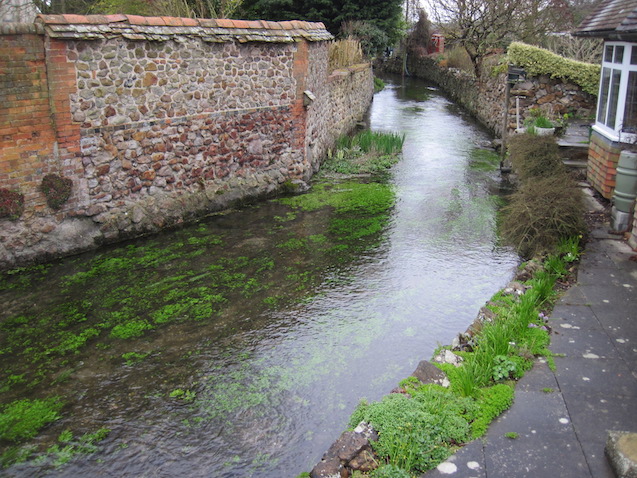
The Lambourn near my home
My fishing is at the other end of the valley. Newbury Street winds its way down the Lambourn Valley roughly following the course of the river. On a bright, clear winter’s morning the low sun acts as a beacon drawing me onward. The soft light illuminates the water meadows and the willow, fiery in the sun. The pastures can be etched with frost or a gossamer mist might cling to the grass. The sun warms my spirit and raises my optimism for the day ahead. The road winds through quaint English villages replete with red brick, flint and thatch. Eastbury, East Garston, Great Shefford, East Shefford, Weston, Welford, Easton, Boxford, Hunts Green, Woodspeen come and go. Church spires reach up piercing the blue skies. As I make progress I glimpse the river, winding across the meadows, crisscrossing under the road. Clear waters chattering over clean gravels, bright weed swaying in the current. It is usually early and there isn’t much traffic on the back roads but I have to have my wits about me, I must remember to slow down for the humpback bridges or scrape my sump. There are suicidal pheasants to dodge. All the way I am anticipating the river; what height, what flow, what hatches, what tactics, what luck? I arrive ready to take on the river's challenge, mentally and physically prepared.
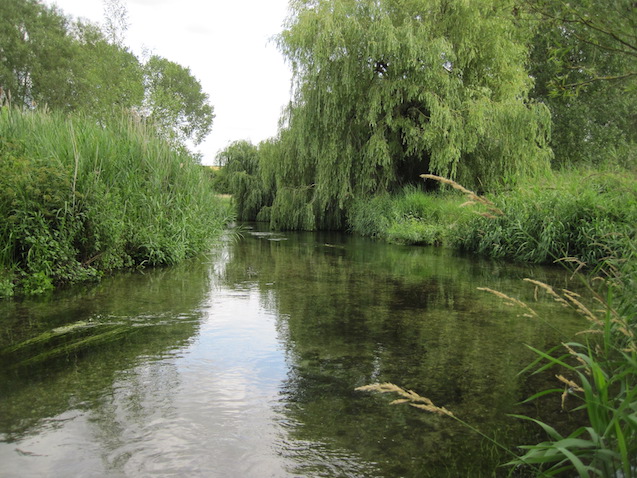
The Lambourn near Newbury
Most of my regular fishing is a little further afield. Regular trips down to Dorset and the River Frome take up to two hours, depending on the traffic. Sometimes I just want to get there. Satellite navigation has been a god send for me. When I join a new club or syndicate I do a pre-season reconnaissance to check out the beats and the logistics. I track down all the parking spots and add them as favourites on my TomTom. So on the day one click and my journey is planned. And this clever little device will find me the quickest route, whisking me to my fishy destination. My work means I spend a lot of time on the highways and byways of the UK so come the weekend I often prefer to take the road less travelled, a more scenic route. Tom Tom will accommodate this. These scenic routes often take longer but are more direct, and shorter, but involve a good deal of weaving about. With TomTom constantly checking the route and suggesting alternatives, the route is never the same twice. On a recent run down to the Wraxall Brook for a work party I enjoyed the most fabulous journey. It was a classic late winter morning, cold but with a weak sun easing the frost off the fields, pale blue skies stretching out before me. My ‘off the beaten track’ route took me from the Lambourn Valley up and over into the Kennet, then Wylye, then Bourne, then Avon, then Ebble, then Stour, then Piddle and finally Frome valleys. I went past army bases, research centres, ancient monuments, historic settlements, hill forts, churches and cathedrals. Millions of years of geomorphology and thousands of years of human history glimpsed and savoured as I sped along. I felt glad to be alive, I felt infinitesimally small in the scheme of things.
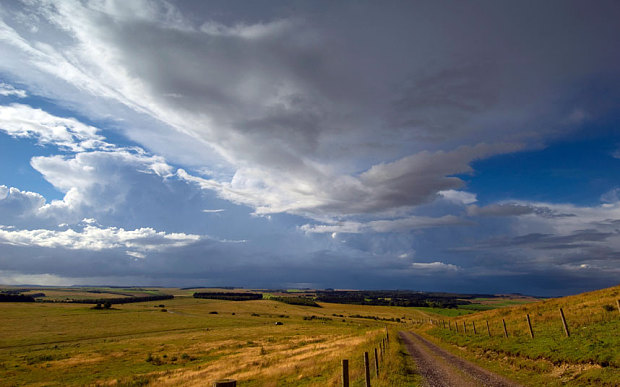
Salisbury plain
My shortest journey doesn’t involve a car at all. Several times a year I run away to the wilds of North Yorkshire and the little known Littondale. Hiding away a little way up the dale is Arncliffe and the wonderful Falcon Inn.
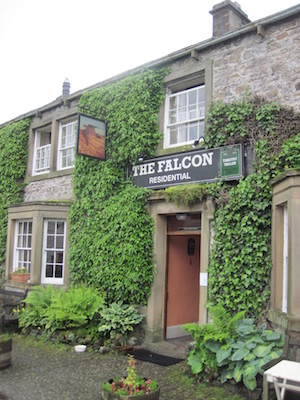
The Falcon at Arncliffe
The Falcon is one of those wonderful examples of a country inn that hasn’t been mucked around with. It has everything a country inn should have. Great beer, good food, open fires, comfortable beds, a warm welcome and friendly hosts. Plus the Falcon has fishing. But not just fishing. The Falcon has over four miles of the Skirfare; free to residents and for a nominal sum to visitors. With the river only a short walk away one can enjoy a relaxed breakfast and a few cups of coffee before stringing up rods and donning waders on the village green. Narrow lanes draw you through the village and on to the arched stone bridge that carries the road across the Skirfare and on to Litton. The fishing stretches away upstream and downstream of the bridge. Standing on the bridge staring into the river, scanning upstream and down for rises or a hatch provides time to decide which way to head.
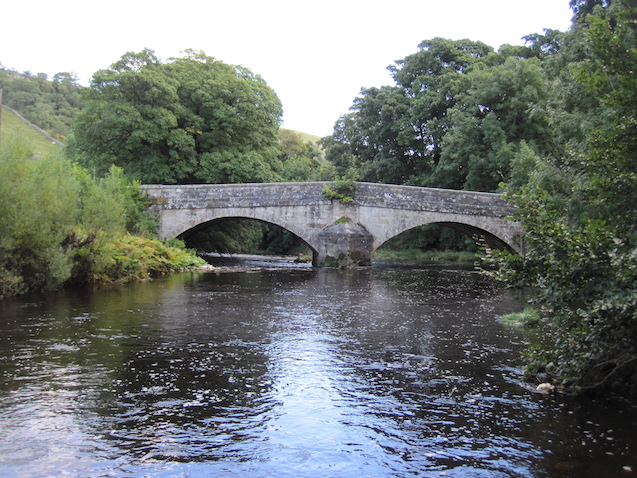
The bridge at Arncliffe
If I decide to go up I can drop in just by the bridge and wade almost all the way up to the large tree that marks the top of the Falcon water. The Falcon is rather an unusual river in that it is a spate river, like many others in this part of the world, but it is also spring fed. The water bubbling up from limestone bedrock, the same limestone that forms the pavement above Malham and feeds the River Aire. The permeable nature of limestone means that above the large tree in the absence of rain the Skirfare disappears below the surface.
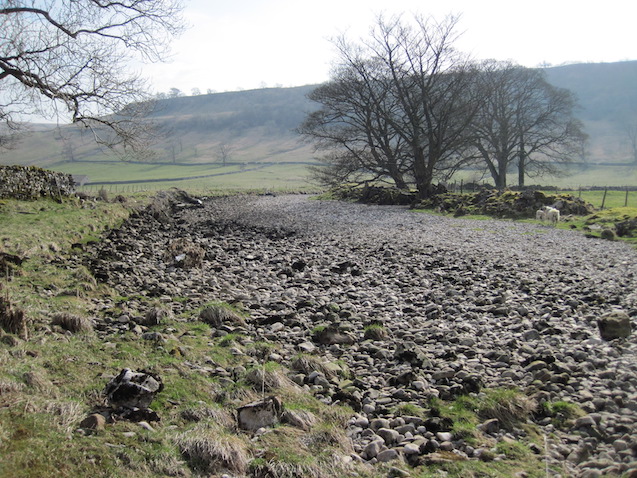
The Skirfare dry above the top of the beat
If I decide to go down I follow the footpath that leads out of the village for Hawkswick. The path crosses sheep meadows, the river away to the left. It then meets the river and follows high above it. I pause from time to time staring through the peat-stained waters in hope of spotting a fish. At Crookholme the river swings away from the path for a good while before bumping back into it at Doctor's pool, a deep dark pool that holds big fish. For the bottom of the beat you follow the path along the top of the sandmartins' bank and then peel off heading for where the fast run undercuts the big trees above the stone barn. As you stride out the hills rise steeply on either side of the valley. Sheep graze the rough pastures and peregrines nest on scars and cliffs. The walk is invigorating and whets your appetite for the day's fishing ahead.
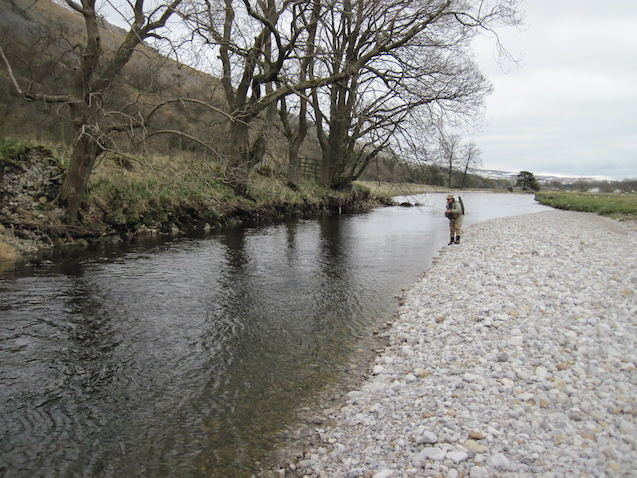
Bottom beat on the Skirfare
If you like your fishing on the more exotic side journeys can become increasingly complex and lengthy. I’ve fished in the USA, Europe and Scandinavia. These all require a flight, or flights, transfers and/or car hire to reach your destination. Farther flung destinations may require more effort. Some years ago I had amassed a significant number of airline loyalty points; my job required me to fly in and out of Denmark most weeks. I decided to use them up on a trip to fish in the Arctic Circle. My first flight took me from London to Stockholm. Before leaving London the most important task was to stock up on hard liqueur. Have you ever tried buying alcohol in Sweden? Don’t, you have to go to the state shop, Systembolaget, and it costs a fortune.
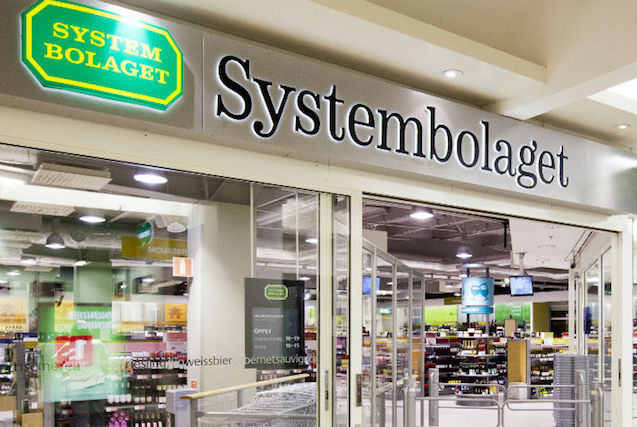
Systembolaget
That flight was a fairly standard experience, for me that means squashed into a seat that isn’t quite big enough with insufficient leg room. After a couple of hours wait at Arlanda airport I transferred onto the plane that serves the northern parts of Sweden. A plane that behaves more like a bus. Every half hour or so the plane landed at some out of the way part of Sweden, a few people got off, a few people got on and then it’s off to the next airport. I got off at Arvidsjaur. I was pleased that Arvidsjaur had an actual airport. Some of the airfields we’d stopped off on route seemed to just have a bus shelter. I was also pleased to be met by a man with a van who helped me with my luggage and then drove me the hundred-odd kilometres to Arjeplog. From the air the north of Sweden is a mosaic of green and blue. Forest and fell interspersed with river and lake. From the road the landscape comes into sharp relief. At times the road is crowded in by pine forest, and then suddenly wide expanses of flat calm water. Always ahead of us the high grey mountains that mark the border with Norway. At Arjeplog I had the chance to freshen up and get some rest. The hostel was basic but comfortable. The permanent daylight of midsummer and the thin curtains made getting to sleep tricky but I managed a few hours before I had to meet my driver once more.
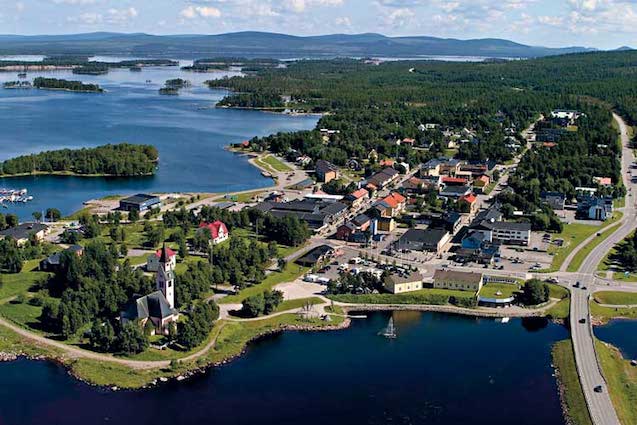
Arjeplog
It was a different man who met me that morning, not that you would have known it was morning, for the short drive to the outskirts of town. His pickup was loaded with gear, I just about managed to fit in. It turned out that he was the pilot who would fly me the last leg to the fishing camp at Meikak. I have flown in many types of aircraft over the years, big and small. But up until that point I had never flown in a helicopter. I hoped for one of those huge affairs you see transporting troops in and out of theatre. I got an EC120 Eurocopter. Nominally five seats, there was actually only room for me and the pilot what with my fishing gear and all the gear he was taking into Miekak. There is no road access to Meikak so everything either goes in by helicopter during the summer or snowmobile in the winter. I was scared shitless, excuse my language. One moment we were high above the valleys looking down on reindeer and moose, the next we were buzzing the hill crests, skimming the tree tops. I was never more glad to arrive anywhere. I was tempted, like the pope, to kiss the ground Miekak stands on. After two days travelling I was more than ready to pull on my waders and get out on the rivers and lakes of Lapland.
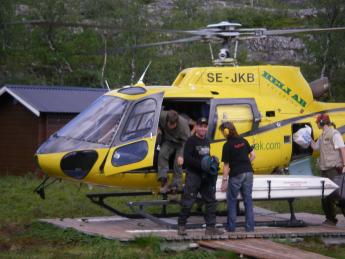
The helicopter
Getting to your fishing can also be a great opportunity to get to know your companions and your locality. Visiting Bosnia we had to fly into Croatia and then transfer by minibus to our accommodation for the week. This meant a lengthy drive. I only knew our host, Paul Proctor, so it provided a great chance to get to know the other rods. Names, homes, professions, back stories, previous fishing adventures were all exchanged as we made our way across the border and onward into Bosnia. The local driver shared with us everything he knew of Bosnia. Its history, the civil war, flora and fauna, as well as the fact that in Banja Luka there are five times more women than men. This makes for a very good night out, apparently. The mood in the bus changed as we climbed up on to the plateau abandoned during the Bosnian War in the early 1990s. The landscape was eerily empty, unoccupied farmhouses peppered with gun and shell shot. Little sign of people, or even animal life. It wasn’t till we neared the Pliva and the lodgings at Radoja that the conversations warmed back up with thoughts for the week ahead.
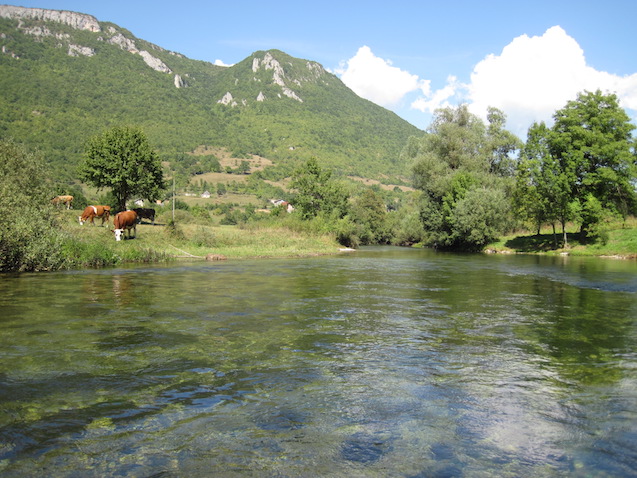
The Pliva
If the journey is an intrinsic part of any fishing trip, arriving is it culmination. n Norway recently we had hardly touched down at our riverside cottage before we were in waders and casting a line at the Trysil. Keen to breath in some fresh air and stretch out our muscles; we were coiled springs, we needed to unwind.
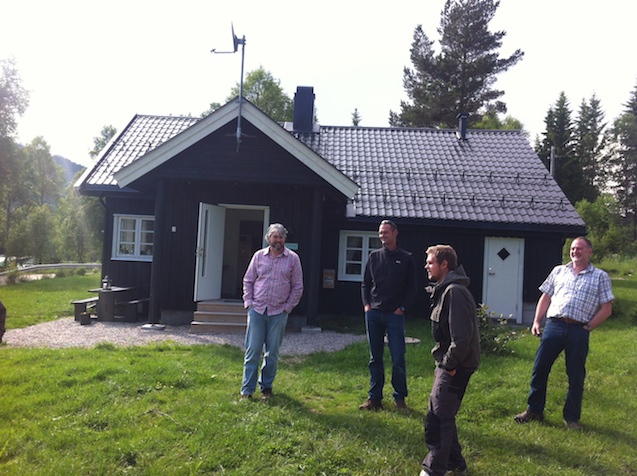
Arriving at the Trysil
So whilst getting to your fishing can be a time consuming and tiring endeavour it can also be a wonderfully entertaining, mind-broadening, inspiring journey through landscapes and history. Certainly not just a means to an end.
Biography:
Kris Kent has been fly fishing and trotting for brown trout and grayling for over 20 years in the UK, Europe and Scandinavia. He is PR Officer for the Grayling Society and helps out The Wild Trout Trust with their online communications and events.